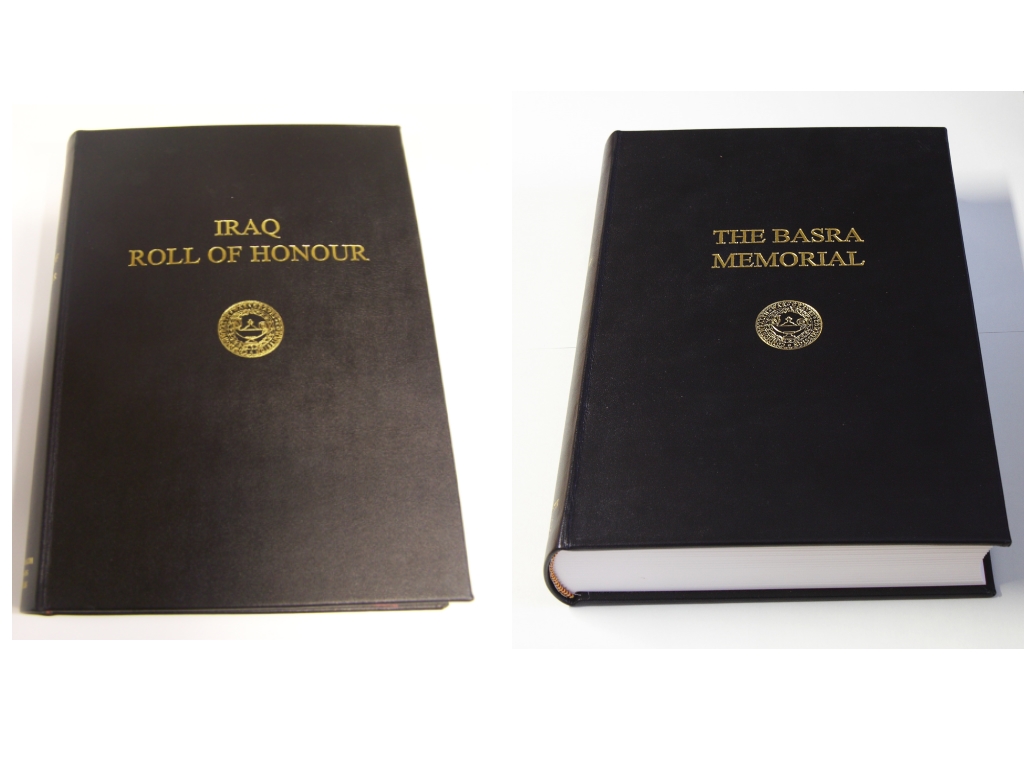Baghdad (North Gate) War Cemetery
- Country Iraq
- Total identified casualties 4487 Find these casualties
- Identified casualties from First & Second World War
- GPS Coordinates Latitude: 33.35442, Longitude: 44.38648
Roll of Honour
A two volume Roll of Honour listing all casualties buried and commemorated in Iraq has been produced and are on display at the Commission's Head Office in Maidenhead. Digital versions of these Rolls of Honour have been produced and are available to view online.
View the digital Rolls of HonourHistorical Note
 Not all the casualties commemorated within this cemetery received permanent headstones. Some Indian First World War casualties were commemorated on namesless memorials with their names listed in a printed cemetery register. Owing to difficulties accessing the country since the first Gulf War, the CWGC has not yet been able to correct this, although plans are being made to ensure these men are appropriately commemorated.
Not all the casualties commemorated within this cemetery received permanent headstones. Some Indian First World War casualties were commemorated on namesless memorials with their names listed in a printed cemetery register. Owing to difficulties accessing the country since the first Gulf War, the CWGC has not yet been able to correct this, although plans are being made to ensure these men are appropriately commemorated.
You can find more information about historical inequalities in commemoration in our Special Committee’s report.
PLEASE FOLLOW THE FCDO RECOMMENDATIONS BEFORE VISITING THIS SITE
Use the link below to read the latest update on the status of this site:
Location information
Baghdad (North Gate) War Cemetery is located in a very sensitive area in the Waziriah Area of the Al-Russafa district of Baghdad. The main entrance to the cemetery is located opposite the College of Arts and the Institute of Administration in Baghdad University and adjacent to the Iraqi Cigarette Factory in Waziriah Area and the Press of Ministry of Defence.
Visiting information
The erection of 511 headstones, with new concrete bases, as well as repair to the boundary fence was completed in 2012.
Whilst the current climate of political instability persists it is extremely challenging for the Commission to manage or maintain its cemeteries and memorials located within Iraq. A two volume Roll of Honour listing all casualties buried and commemorated in Iraq has been produced. These volumes are on display at the Commission's Head Office in Maidenhead and are available for the public to view.
Before considering a visit to Iraq the Commission strongly recommends that you check the advice given by the Foreign & Commonwealth Office on the travel section of their website:
www.fco.gov.uk/en/travel-and-living-abroad/travel-advice-by-country/
History information
In 1914, Baghdad was the headquarters of the Turkish Army in Mesopotamia. It was the ultimate objective of the Indian Expeditionary Force 'D' and the goal of the force besieged and captured at Kut in 1916. The city finally fell in March 1917, but the position was not fully consolidated until the end of April. Nevertheless, it had by that time become the Expeditionary Force's advanced base, with two stationary hospitals and three casualty clearing stations.
The North Gate Cemetery was begun In April 1917 and has been greatly enlarged since the end of the First World War by graves brought in from other burial grounds in Baghdad and northern Iraq, and from battlefields and cemeteries in Anatolia where Commonwealth prisoners of war were buried by the Turkish forces.
At present, 4,160 Commonwealth casualties of the First World War are commemorated by name in the cemetery, many of them on special memorials. Unidentified burials from this period number 2,729.
The cemetery also contains the grave of Lieutenant General Sir Stanley Maude, Commander-in-Chief of the Mesopotamian Expeditionary Force, who died at Baghdad in November 1917 and the memorial to the 13th Division which he commanded. A memorial to the 6th Battalion Loyal (North Lancashire) Regiment was brought into the cemetery from the banks of the Diyala River in 1947.
During the Second World War, Baghdad was again an objective of Commonwealth forces. The 20th Indian Infantry Brigade reached the city from Shaiba by the Euphrates route on 12 June 1941 and the 21st Indian Infantry Brigade, part of the 13th Duke of Connaught's Own Lancers, together with the 157th Field Regiment, Royal Artillery, arrived on 19 June via the Tigris. An advanced base was established later near the city and remained in use until 1946.
Most of the 296 Commonwealth servicemen of the Second World War buried in the cemetery died of illness or by accident when serving with PAIFORCE. Again, a number of the graves were brought in from other burial grounds.
Within the cemetery is the Baghdad (North Gate) (Khanaqin) Memorial, commemorating 104 Commonwealth servicemen, 437 Polish soldiers and three soldiers of the Arab Legion of the Second World War buried in Khanaqin War Cemetery which, owing to difficulty of access, could not be properly maintained.
The North Gate Cemetery also contains 127 war graves of other nationalities from both wars, 100 of them Turkish, and 41 non-war graves.


